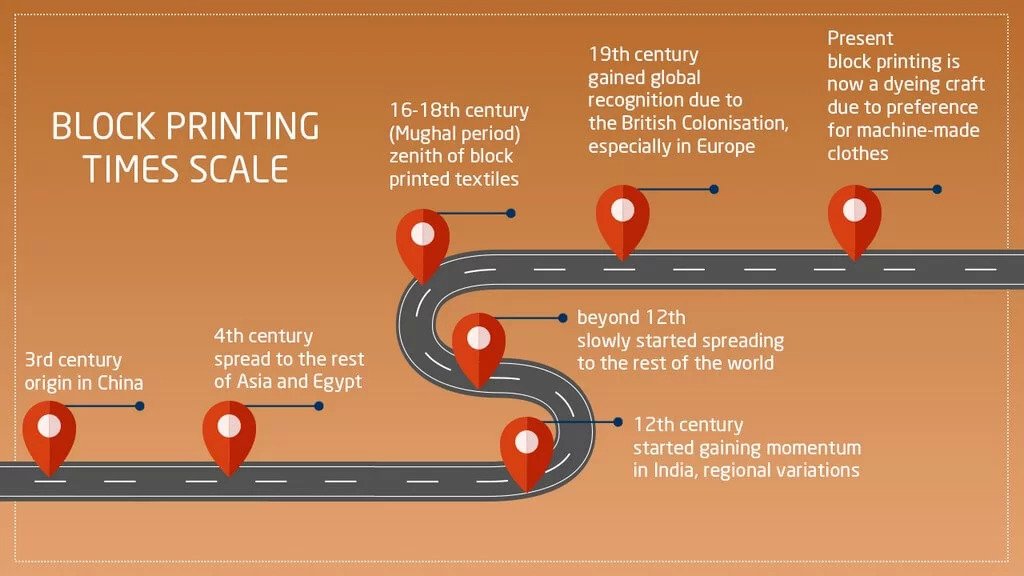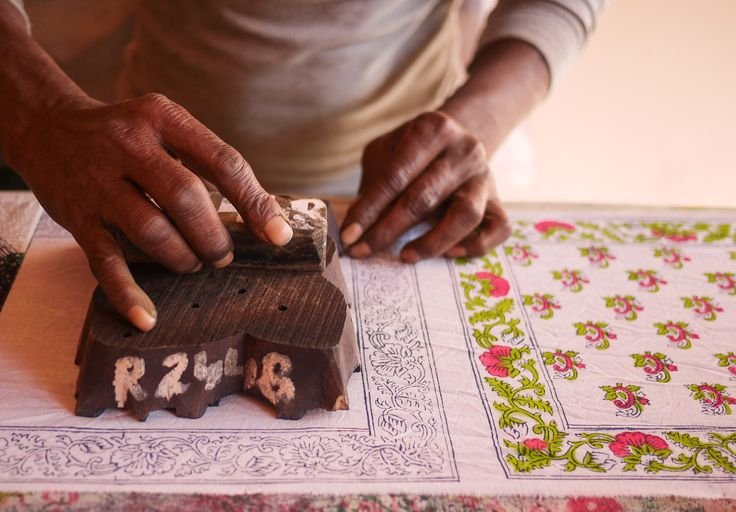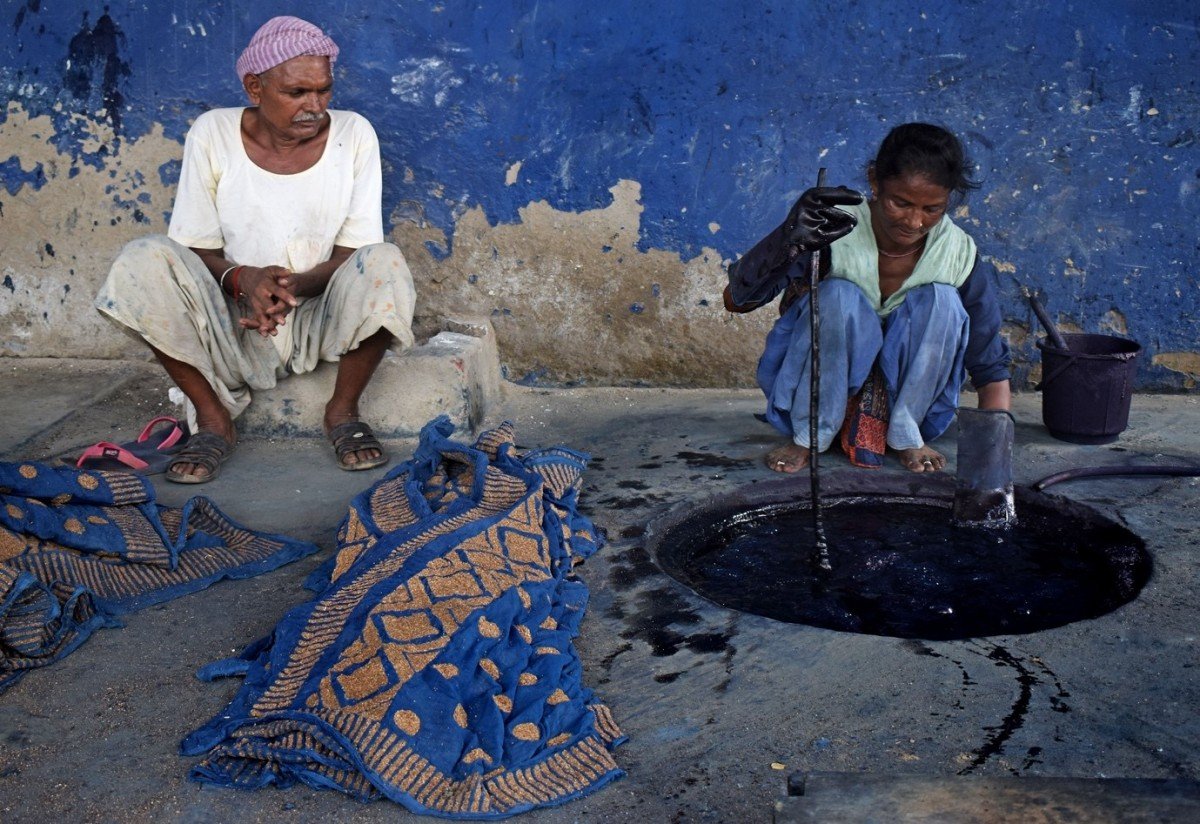The Ancient Art of Handblock Printing
For many years, people have been captivated by the exquisite designs and age-old processes of Handblock printing. With origins in ancient civilizations, this creative technique has endured the test of time and carries the rich historical and cultural significance of its ancestors with it. In this post, we will look at the history, methodology, and ongoing fascination of Handblock printing.
India has a vital role in the history of handblock printing. Block-printed fabrics were discovered in the remains of the ancient Indus Valley Civilization, dating back over 4,500 years. The intricate design and patterns on these fabrics showcase the mastery of early Indian artisans.

Handblock printing flourished in several areas of India during the mediaeval period, inspired by numerous ruling dynasties and cultures. Rajasthan, Gujarat, and West Bengal became renowned centers for this craft. Rajasthan is well-known for its vibrant and intricate block prints. Paisleys, flowers, animals such as elephants and peacocks, and geometric designs are among the traditional patterns. Rajasthani handblock prints frequently feature bold, eye-catching colors.
History, methodology, and ongoing fascination of handblock printing:
1. History and Origin of Handblock Printing
Handblock printing has a long history dating back to prehistoric times. This form of art originated in places such as India, China, Egypt, and Japan. Each location created its own distinct designs and themes that reflected local traditions and cultures.
India, for example, has a long history of handblock printing, with centers of the trade in Rajasthan, Gujarat, and West Bengal. These areas feature different patterns and decorations.

Historic Representation of Handblock printing
2. Technique and Process
Handblock printing is a method that uses intricate hand-carved wooden blocks as stamps to produce designs on cloth. Skilled artists carve intricate designs onto wooden blocks, assuring precision and attention to detail.

Artisan creating handblock printing on cloth using wooden block
The dyed blocks are then pressed onto the cloth, creating beautiful and repetitive designs. To align the block and produce a cohesive design, the technique requires expertise and a steady hand.
3. Natural dyes and Color
Handblock printing has traditionally used natural colors obtained from plants, minerals, and insects. These natural dyes provide a distinct color pallet that ranges from earthy tones to vivid colors. For instance, various shades are frequently created using indigo, turmeric, madder, and pomegranate. While synthetic dyes are being used, many craftsmen still use natural dyes to retain the originality and beauty of their work.

Creating color pigments using natural process
4. Regional Variations
Handblock printing evolved differently in various regions of the world, resulting in distinct styles and techniques. In India, for example, Rajasthan is known for its vibrant and intricate block prints featuring motifs like paisleys, flowers, and elephants.
Gujarat is recognized for using natural colors and geometric patterns, but West Bengal is known for its intricate floral designs. Japanese handblock printing, known as “katazome,” on the other hand, showcases delicate and minimalist designs inspired by nature.
5. Revival and Contemporary adaptation of handblock printing
While handblock printing has a long history, it has recently seen a revival. Designers and artisans of today have embraced this traditional method by combining it with modern aesthetics and experimenting with new materials. Handblock-printed textiles are now used in contemporary fashion and home décor as well as traditional clothes like as sarees, kurtas, and scarves.
Handblock prints have gained popularity among those seeking sustainable and artisanal items due to their unique charm and handcrafted quality.
6. Sustainable and ethical production of handblock printing
Handblock printing complies with sustainable and ethical practices. Natural dyes and artisanal processes have lesser environmental effect than mass manufacturing and synthetic colors. In addition, this art form provides employment opportunities for artisans, particularly in rural regions, which means supporting local communities and preserving traditional craftsmanship.
By purchasing handblock-printed products, consumers helps to preserve cultural heritage and support the livelihoods of skilled artisans.
Conclusion:
Handblock printing highlights the enduring legacy of human creativity and the elegance of handcrafted craftsmanship. Its timeless appeal and intricate designs continue to mesmerize peopl all around the world. We get a better understanding for the skilled artisans who keep this ancient tradition alive, ensuring that it remains an integral part of our cultural heritage for future generations as we delve into the enchanting world of handblock printing.



